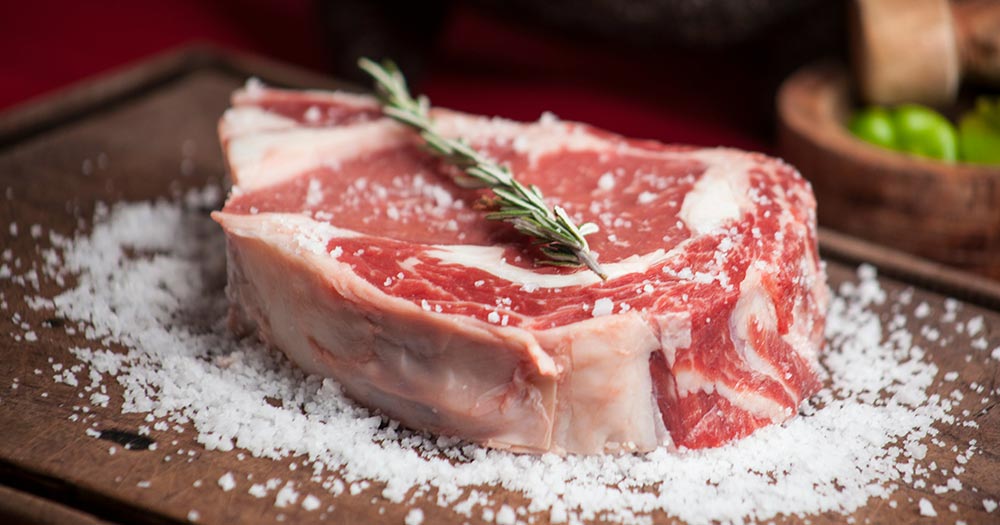Table of Contents
When it comes to choosing beef, the options can be overwhelming. The debate between Grass-Fed, Grain-Fed, and Wagyu beef has become increasingly prominent in recent years, with each type offering unique qualities and flavors. In this blog post, we will explore the world of beef and dive into the health benefits, drawbacks, ideal consumers, cost differences, and cooking methods for each type. We will also touch upon the significance of grass-fed and grass-finished, grain-fed and grass-finished, and even explore the intriguing realm of olive-fed Wagyu beef.
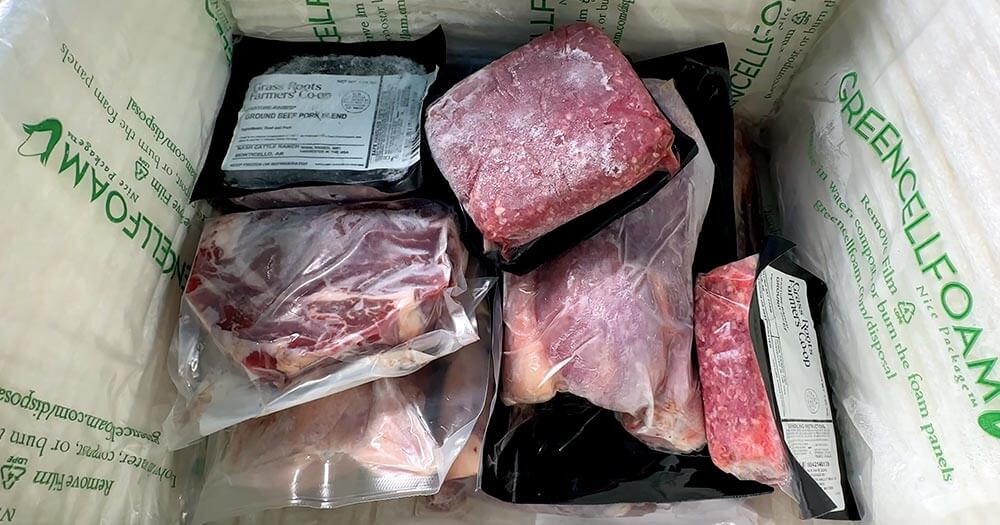
Grain-Fed Beef
Grain-fed beef is perhaps the most common type of beef found in supermarkets and restaurants. These cattle are typically raised in feedlots, where they are fed a diet primarily consisting of grains like corn and soybeans. Some companies that offer grain-fed beef include Grass Roots Farmers Co-Op, American Grazed Beef, Porter Road, Simpson’s Meats, White Oak Pastures, and Omaha Steaks.
Health Benefits
- Marbling: Grain-fed beef is known for its high marbling content, which results in a juicier and more tender texture. The fat enhances the flavor, making it a favorite for those who love a rich taste.
Negative Health Considerations
- Less Omega-3s: Grain-fed beef contains lower levels of beneficial omega-3 fatty acids compared to grass-fed counterparts.
- Higher Omega-6s: The grain-heavy diet can lead to an imbalance of omega-6 to omega-3 ratios, potentially contributing to inflammation and other health concerns.
Ideal Consumers
- People who prioritize tenderness and a richer flavor in their beef.
- Those looking for more affordable options.
Cost Difference:
- Grain-fed beef is generally more budget-friendly than grass-fed or Wagyu beef.
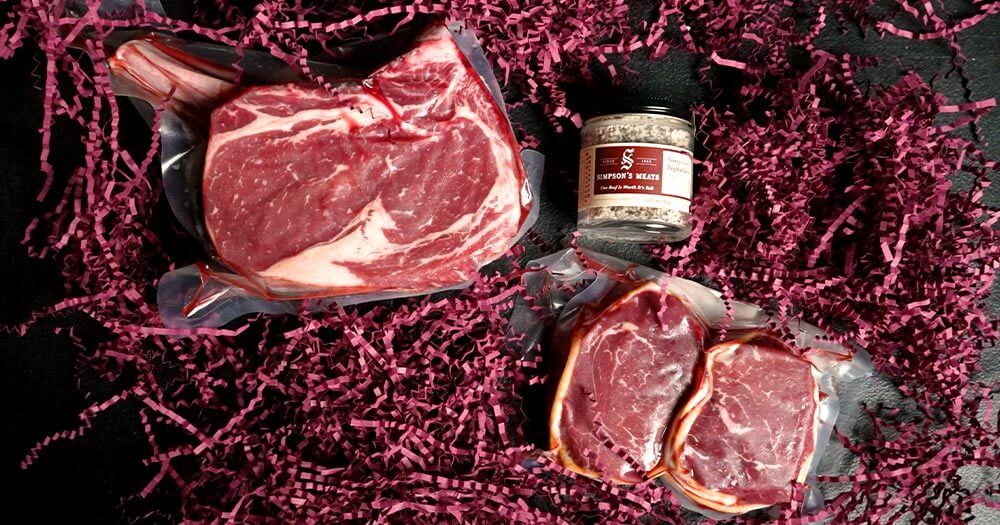
Grass-Fed Beef
Grass-fed beef comes from cattle that graze on pasture, consuming a natural diet of grass and forage. Some companies that provide grass-fed beef include ButcherBox, Crowd Cow, Grass Roots Farmers Co Op, American Grazed Beef, Heartstone Farm, Force Of Nature Meats, Simpson’s Meats, and White Oak Pastures.
Health Benefits
- Leaner Meat: Grass-fed beef is leaner and lower in saturated fats compared to grain-fed beef, making it a healthier choice for those watching their fat intake.
- Omega-3s: It is higher in beneficial omega-3 fatty acids, which are linked to heart health and reduced inflammation.
- Conjugated Linoleic Acid (CLA): Grass-fed beef contains higher levels of CLA, associated with various health benefits, including weight management and cancer prevention.
Negative Health Considerations
- Slightly Less Tender: Grass-fed beef can be slightly less tender due to its lower fat content, requiring careful cooking to maintain juiciness.
Ideal Consumers
- Health-conscious individuals looking for a leaner and more nutritious option.
- Those who prefer a stronger, earthy flavor in their beef.
Cost Difference
Grass-fed beef often comes at a slightly higher price point than grain-fed beef due to the cost of raising cattle on pasture.
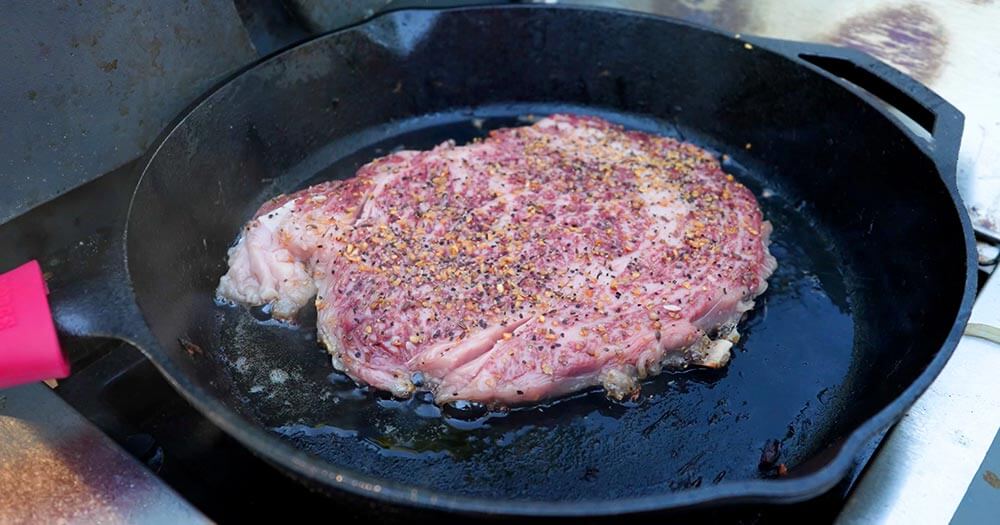
Wagyu Beef
Wagyu beef is renowned for its exceptional marbling and unmatched tenderness. It hails from Japan and is prized for its luxurious texture and flavor. Some companies that offer Wagyu beef include Crowd Cow and Simpson’s Meats.
Health Benefits
- Marbling Excellence: Wagyu beef’s intense marbling provides a melt-in-your-mouth experience and extraordinary flavor.
- Omega-3s and Omega-6s: While Wagyu beef contains both types of fatty acids, it is primarily sought after for its marbling rather than its omega content.
Negative Health Considerations
- High-Fat Content: The richness of Wagyu beef comes from its high-fat content, making it less suitable for those watching their fat intake.
Ideal Consumers
- Gourmands and culinary enthusiasts seeking the epitome of beef luxury.
- Those looking for a unique and indulgent dining experience.
Cost Difference
Wagyu beef is significantly more expensive than both grain-fed and grass-fed beef due to its specialized breeding and care.
Cooking Methods
Each type of beef benefits from specific cooking methods to bring out its best qualities:
- Grain-Fed Beef: Best suited for grilling, pan-searing, or broiling due to its marbling. The high-fat content helps keep it juicy during cooking.
- Grass-Fed Beef: Grass-fed beef is leaner, so it benefits from lower and slower cooking methods like braising, slow-roasting, or sous-vide to maintain tenderness and juiciness.
- Wagyu Beef: Wagyu beef is best experienced with minimal cooking. Quick methods like pan-searing or grilling to medium-rare are ideal to preserve its intense marbling and flavor.
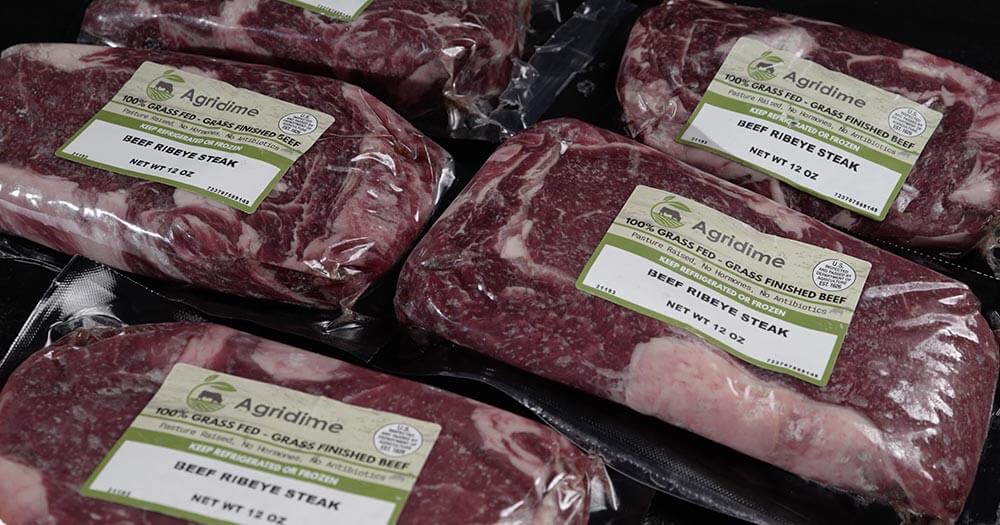
Why Choose Grass-Fed Beef
For those who prioritize heart health and weight loss surgery, grass-fed beef can be an excellent choice. Its leaner profile and higher omega-3 content can support these goals. Additionally, the reduced saturated fat content aligns with heart-healthy dietary recommendations.
Grass-Finished, Grain-Finished, and Olive-Fed Wagyu
Grass-finished beef refers to cattle that have exclusively grazed on pasture throughout their lives, while grain-finished cattle have transitioned to a grain-based diet in their final stages. Olive-fed Wagyu beef takes luxury to a new level, with cattle raised on an exclusive diet of olives to create a unique flavor profile.
Seasonings and Cooking Methods
Enhancing the flavor of your beef is essential, and there are numerous seasonings and salts to consider, including Montreal steak seasoning and others. While the choice of seasoning largely depends on personal taste, experimenting with various options can elevate your beef dishes. Some affiliate links to these seasonings can be included for your convenience.
- Montreal Steak Seasoning: Renowned for its bold and savory flavor, Montreal steak seasoning is a versatile choice for seasoning both grain-fed and grass-fed beef. Its blend of garlic, pepper, coriander, and salt complements the natural richness of beef.
- Sea Salt and Himalayan Pink Salt: High-quality salts, such as Himalayan pink salt or sea salt, can enhance the beef’s flavor. Their mineral-rich profiles add depth to your dishes.
- Herbs and Spices: Experiment with herbs like rosemary, and thyme, or spices like paprika, cumin, and chili powder to create unique flavor profiles.
Sustainability and Supporting Small Farms
Choosing grass-fed and grass-finished beef goes beyond flavor and health benefits; it also promotes sustainability and supports small-scale farmers. These farmers often prioritize environmentally friendly practices, such as rotational grazing and reduced pesticide use, contributing to healthier ecosystems. By selecting grass-fed and grass-finished beef, you’re endorsing ethical and sustainable agriculture while helping small farmers thrive in an industry dominated by large corporations.
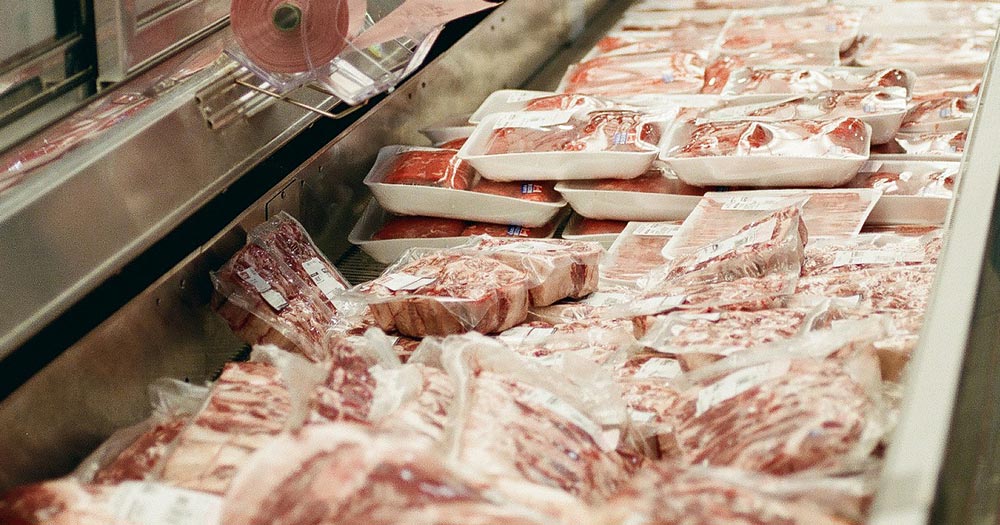
Contaminated Meat in Grocery Stores
Buying meat in grocery stores can sometimes be a gamble. It’s important to be aware of potential contamination risks. The mass production and processing of meat in large facilities can increase the likelihood of cross-contamination with harmful bacteria like E. coli and Salmonella. Moreover, the packaging and storage conditions may not always meet the highest standards, leading to a higher risk of foodborne illnesses.
Preferred Cooking Methods
- Weber Grill: Grilling on a Weber grill can be an excellent choice for all types of beef. It imparts a smoky flavor and beautiful grill marks. For leaner cuts like grass-fed beef, consider marinating or using a dry rub to add moisture and flavor.
- Cast-Iron Pan: Searing your beef in a cast-iron pan is perfect for achieving a caramelized crust. This method works well for both grain-fed and grass-fed beef, providing a lovely sear.
- Tovala Smart Oven: The Tovala smart oven offers precision cooking and can be used for various beef cuts. Its versatility makes it suitable for broiling, roasting, or even slow-cooking grass-fed beef dishes.
Diet Recommendations
- Body Builders: Bodybuilders often require high-protein diets. Grain-fed beef, with its higher fat content, can provide a more substantial calorie intake, making it suitable for bulking phases. Grass-fed beef can be incorporated for its leaner profile during cutting phases.
- Single Parents: Convenience is key for single parents. Opting for pre-marinated or pre-seasoned cuts can save time in meal preparation. Lean grass-fed beef can be a healthier choice for family meals.
- High-Income Individuals: Those with a higher budget can explore the indulgent world of Wagyu beef for special occasions or to satisfy their culinary cravings.
- College Students: College students can balance their budget and nutrition by choosing grass-fed beef for its affordability and health benefits.
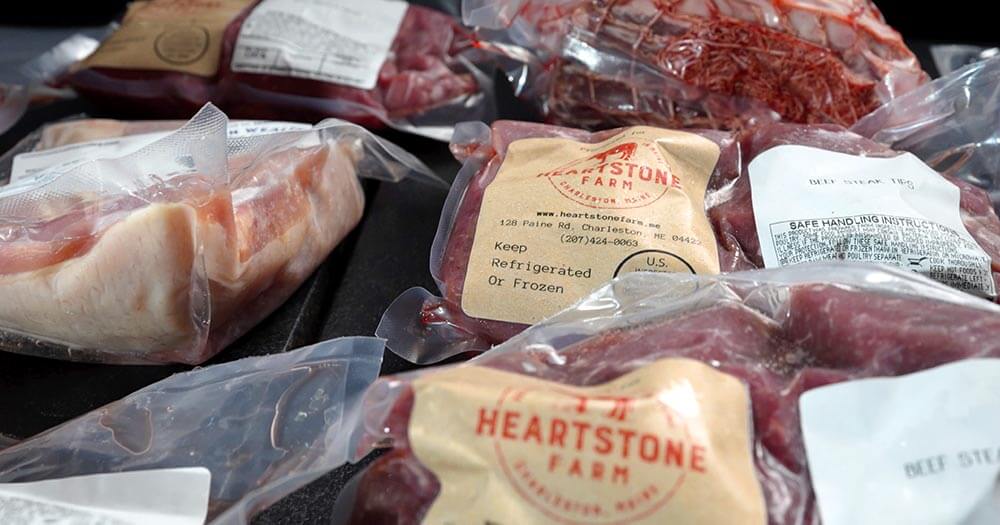
Why Choose Grass-Fed and Grass-Finished Beef for Sustainability
In the world of beef choices, the decision to opt for grass-fed and grass-finished beef goes beyond flavor and nutritional benefits. It’s also a choice that can make a significant impact on the environment and the livelihood of small-scale farmers. Here’s why choosing grass-fed and grass-finished beef stands out as a sustainable and community-supporting option:
1. Sustainable Farming Practices:
- Rotational Grazing: Many small-scale farmers who raise grass-fed and grass-finished cattle employ rotational grazing techniques. This practice involves moving cattle to different sections of pasture, allowing the land to recover naturally. It prevents overgrazing, promotes soil health, and reduces the need for synthetic fertilizers or pesticides.
- Reduced Carbon Footprint: Grass-fed cattle tend to produce fewer greenhouse gas emissions compared to their grain-fed counterparts in feedlots. Choosing grass-fed and grass-finished beef supports eco-friendly practices that contribute to mitigating climate change.
2. Ethical Animal Welfare:
- Access to Open Pasture: Grass-fed cattle typically have access to open pastures, allowing them to exhibit more natural behaviors. This contrasts with crowded feedlots where grain-fed cattle often endure confined and stressful conditions.
- Healthy and Happy Cattle: Grass-fed and grass-finished cattle tend to lead healthier lives, free from the routine use of antibiotics or growth hormones. This ethical treatment aligns with the values of animal welfare advocates.
3. Supporting Small Farms:
- Community-Oriented Agriculture: Small-scale, local farms often rely on grass-fed and grass-finished beef as a sustainable way to operate. By choosing these products, you contribute to the success of these farms and help maintain a diverse and resilient agricultural landscape.
- Preserving Rural Communities: The success of small farms supports rural communities by providing jobs, contributing to local economies, and maintaining the cultural heritage of farming traditions.
4. Quality and Transparency:
- Traceability: Smaller farms that raise grass-fed and grass-finished cattle often prioritize transparency and traceability. They may offer consumers direct access to information about their sourcing and farming practices, ensuring confidence in the quality of the meat.
5. Health and Nutrition:
- Lean and Nutrient-Rich Meat: Grass-fed and grass-finished beef is known for being leaner and higher in certain nutrients, including omega-3 fatty acids, antioxidants, and conjugated linoleic acid (CLA). This can contribute to improved health outcomes for consumers.
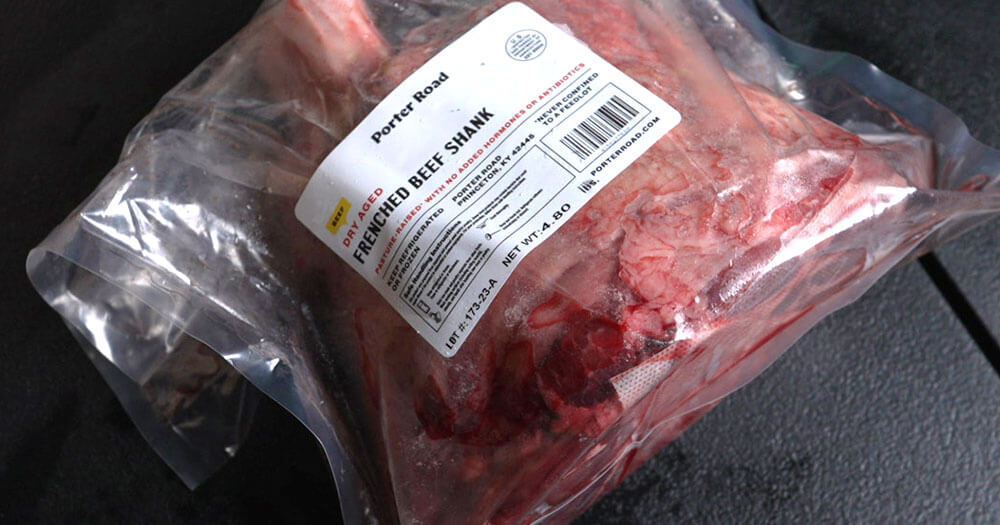
Final thoughts
While the choices between grain-fed, grass-fed, and Wagyu beef can be influenced by personal taste and dietary preferences, the decision to choose grass-fed and grass-finished beef transcends individual benefits. It is a choice rooted in sustainability, ethical farming practices, and community support. By opting for grass-fed and grass-finished beef, you not only enjoy a superior product but also become a part of a broader movement towards a more sustainable and responsible approach to agriculture. Your decision helps uphold the values of environmental stewardship, animal welfare, and the vitality of small-scale farming, making it a choice that nourishes both your body and the world around you.’
In the realm of beef choices, there’s something for everyone. Whether you’re prioritizing health, sustainability, or simply an exquisite dining experience, understanding the differences between grain-fed, grass-fed, and Wagyu beef allows you to make informed decisions. Additionally, by opting for grass-fed and grass-finished beef, you not only enjoy a premium product but also contribute to sustainable farming practices and support small-scale farmers. So, next time you savor that perfectly cooked steak, you can take pride in making a choice that’s not only good for your palate but also for the planet. Remember, the journey of exploring different beef types and flavors is a culinary adventure waiting to be enjoyed.
